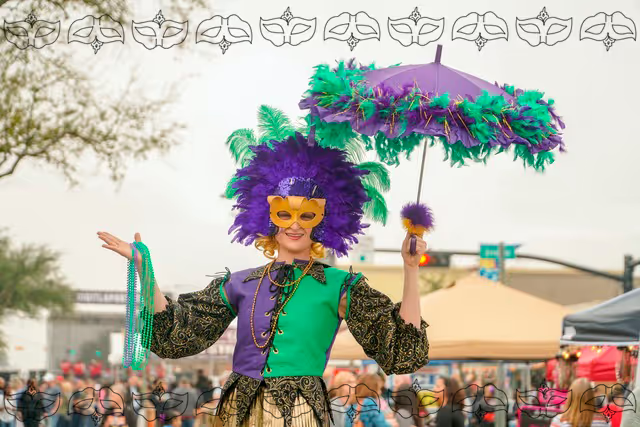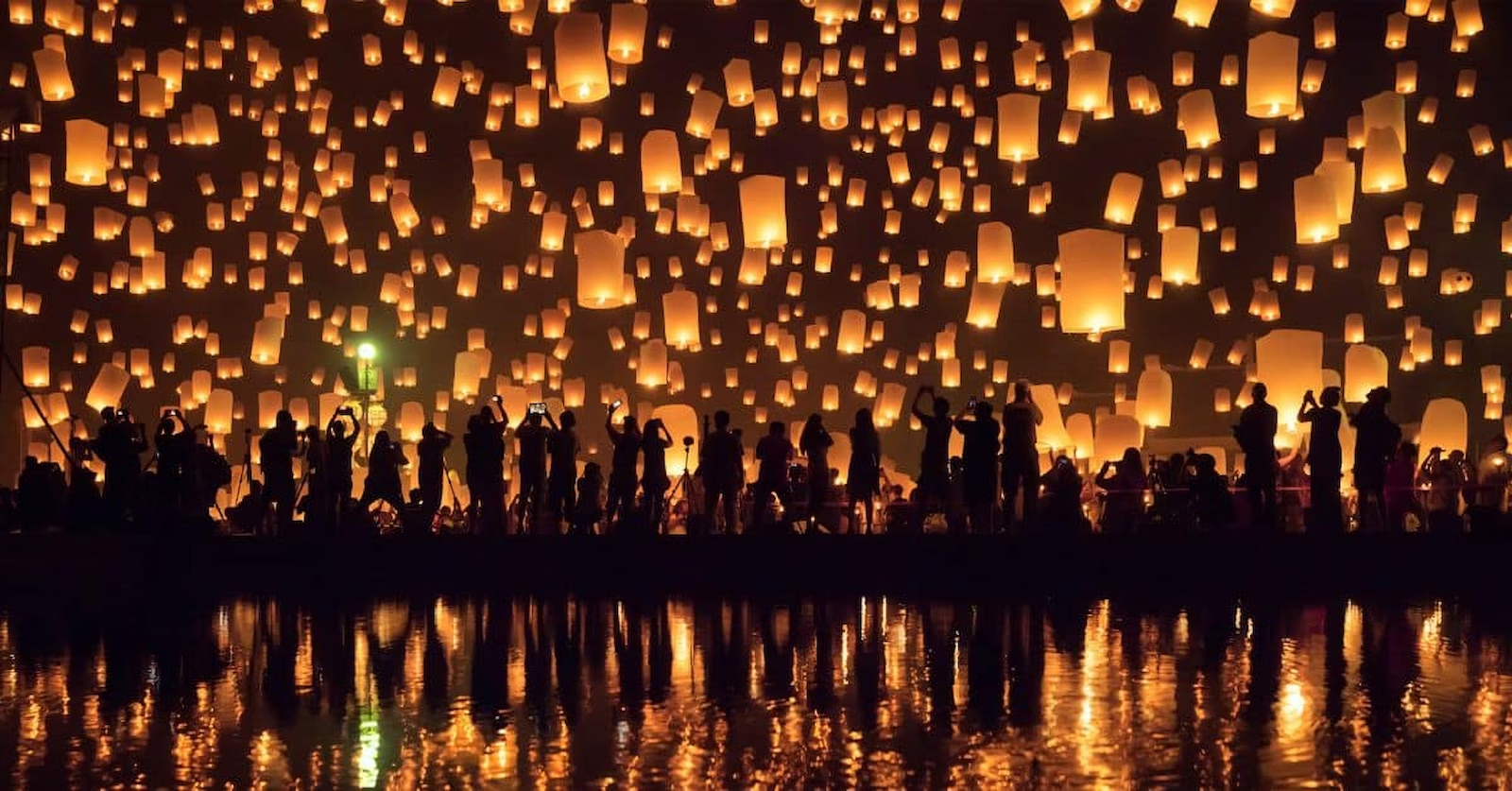The Easter period is celebrated in countless ways all over the world, but Mardi Gras in New Orleans must surely be up there as one of the biggest and brightest. Taking place over a two-week period during lent, the festival celebrates all things excess, from parades, floats, costume balls and lots and lots of drinking! After the pandemic, mass celebrations such as Mardi Gras are more important, and even bigger, than ever.

History
The name ‘Mardi Gras’ comes from the French for ‘Fat Tuesday’, reflecting the Medieval European practice of eating excessively before the ritual fasting of lent. Since the state of Louisiana was originally colonised by French explorers, much of the culture specific to the state has its roots in French tradition. Though it is unknown exactly when the first every Mardi Gras celebration occurred, a 1730 account by Marc-Antoine Caillot included reference to masked revellers enjoying music, dance and even cross-dressing.
Later accounts also mentioned people wearing masks and other costumes, particularly on Shrove Tuesday. By 1856, the first ever official krewe had been established by 21 businessmen in the French Quarter of New Orleans, known as the ‘Mystick Krewe of Comus’. A ‘krewe’ refers to a social club or society that forms to create a float or parade element during the Mardi Gras festivities. Since the first one, there are now hundreds of Krewe’s that work year-round to perfect their themed costumes, floats and dances ahead of the festival.

Schedule of Events
For contemporary Mardi Gras, Epiphany (January 6th) is recognised as the start day of the Carnival season. 'The Twelfth Night Revelers', the second oldest Krewe in New Orleans, have traditionally staged a parade and masked ball on this date since 1870. Following this day, the population of New Orleans more than doubles, and great excitement fills the streets as people prepare for the biggest days. Different Krewes host parades throughout the five day build up, each with its own unique theme and characteristic style.
Mardi Gras itself is the high point of the festival, falling on any Tuesday between February 3rd and March 9th (depending on the date of Easter). The parades start very early, with the world-famous Zulu parade rolling out at 8am. The parade tends to follow the same route every year, through the French Quarter of the city. For those lucky enough to live in the apartments that line the streets in this area, families will camp out on their balconies all day, watching the festivities and calling out for items thrown from the floats. Hotels and Airbnb’s that boast balconies unsurprisingly sell out months before the period, essentially offering visitors a front row seat.
Planning a trip? Skratch has partnered with Sherpa to offer simple, trusted visa applications. Get your USA ESTA here.

Costumes and Throws
There is no set theme to the costumes seen generally at Mardi Gras, it is merely a case of individuals own creativity. Nevertheless, masks are commonly worn, and feathers and sequins are often thrown together to make a costume as striking as possible. Because of the history of nominating a king and queen of the parade (particularly at the social balls that take place in the weeks surrounding Mardi Gras) it is common to see revellers dressed in regal dress, from elaborate crowns to fur-lined capes.
Most distinctive at Mardi Gras is the prevalence of ‘throws’, tiny plastic sets of beads that are thrown from the floats and tend to appear everywhere in the weeks leading up to the event. Parade-goers clammer for beads to be thrown, to build up a big collection to adorn themselves with over the festive period. The phrase “throw me something mister!” has become an iconic phrase and calling it out may result in you being inundated with beads, small toys, medallions or any other collection of small prizes from the floats that go past.

Mardi Gras and African American Heritage
Like the rest of the US, Louisianan identities are a melting pot, due to its history of Trans-Atlantic slavery and European colonialism. Those descended from colonial French and Spanish settlers in Louisiana were known as Creole, and the term eventually became racialised to refer particularly to those of mixed African descent. A Louisiana Creole language has also survived, thanks in part to the efforts of proud Creole descendants. Across New Orleans, attempts have been made to preserve the language, erecting signs, museums and monuments to Creole heritage.
Today during Mardi Gras, many nods to Creole culture and black Creole culture in particular can be seen, such as the music of New Orleans jazz and zydeco, the food of congri, jampalaya and gumbo and the costumes and design of many of the biggest parade floats. The Zulu Parade has its origins as a parody of the original white Krewe societies, of which only white, wealthy individuals were allowed to participate.
Turning harmful stereotypes of black African descendants on their head, the revellers created a parade in homage to southern African Zulus, who drove out British colonists in the 19th century. Today, with around 10% of the crew non-black (yet still donning the Zulu costume and even wearing blackface), the parade is certainly controversial, yet Zulu officials – most of whom are African American - insist it is an inclusive celebration of culture. As we move increasingly with the times, it remains to be seen whether such practices will remain, since there are many calls to put an end to these displays.

Mardi Gras and Adversity:
Following the devastation of Hurricane Katrina in 2005, New Orleans was hugely economically impacted, and much of the city was destroyed. With questions as to whether the Mardi Gras celebrations could continue the following year, it was decided that they would be scaled back to limit the strains on city services and infrastructure, whilst ensuring that the festival could go ahead. Not least for the vital economic boost it brings to the city each year, many felt more than ever the importance of having an excuse for celebration, especially for those who had lost so much. Due to flooding, the normal parade routes had to be altered, and even then, many floats ended up partially submerged and damaged by floodwater. Even though many had lost everything, the carnival was celebrated even more intensely than usual, with many of the floats in satirical reference to the struggle the city had faced.
The February 2020 Mardi Gras parade occurred just before national lockdown, when people were still blasé about the significance of the virus. Many attribute this attitude (and the Trump administration’s influence) to the massive impact the virus had early on in Louisiana, since massive group interaction inevitably fast-tracked the spread. Mardi Gras 2021 went ahead, albeit hugely altered. No in-person parades were held, but virtual parades were streamed, and people were still expected to decorate their houses in honour of the festive period. No doubt the season was especially disappointing to residents, and the memory of celebrating together was all too poignant. However, as the pandemic draws to a close, we can be optimistic that the Mardi Gras festivities will be the biggest and most ecstatic that they have ever been.
Starting from Skratch? Here’s a Few Tips to Get Started:
https://www.mardigrasneworleans.com/history/
https://www.youtube.com/watch?v=9Bv1mFl9SI4 - Beautiful 4k YouTube mini-doc about Mardi Gras










.avif)
.avif)




.jpg)
